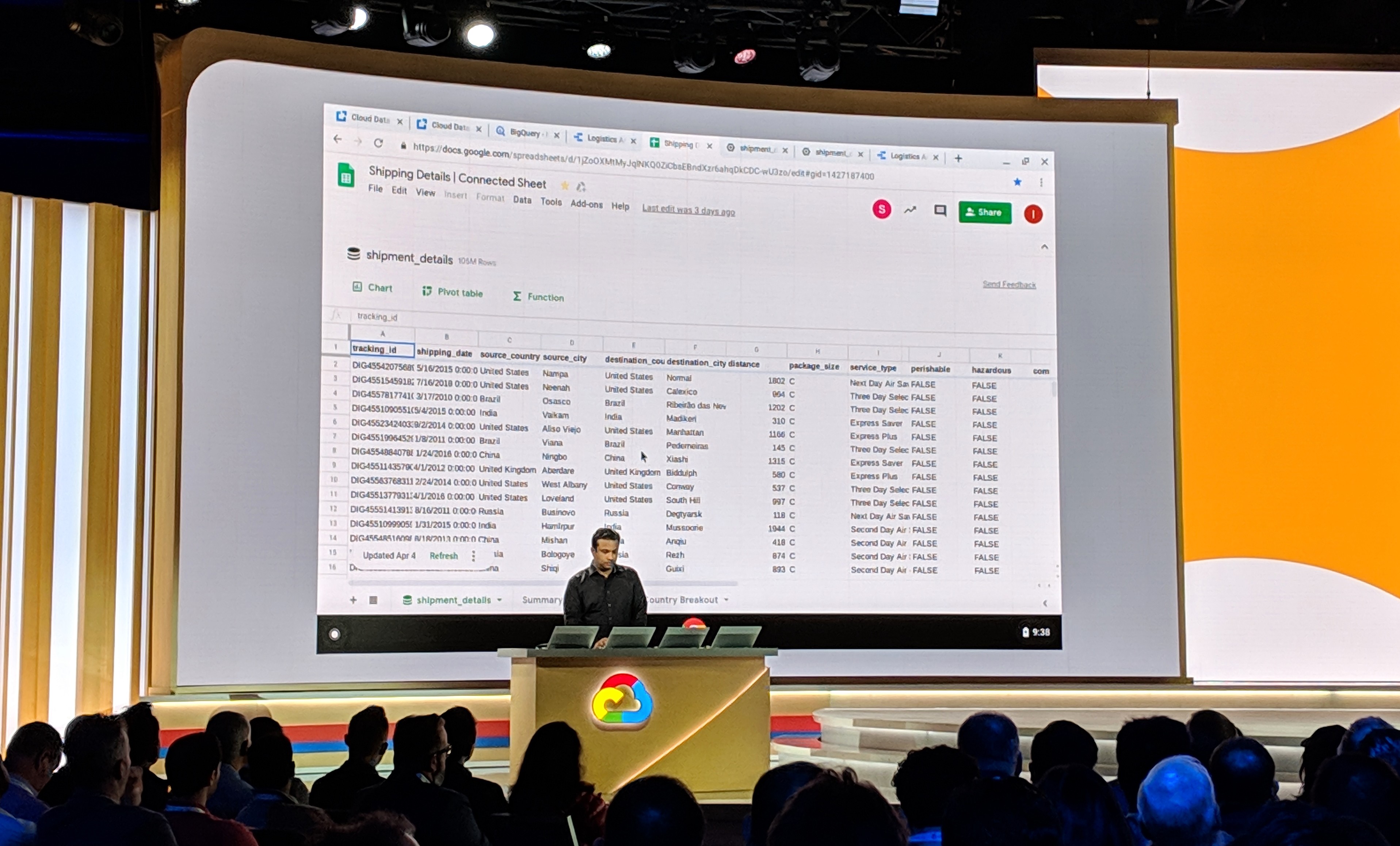Google today announced a new services that makes the power of BigQuery, its analytics data warehouse, available in Sheets, its web-based spreadsheet tool. These so-called ‘connected sheets’ face none of the usual limitations of Google’s regular spreadsheets, meaning there are no row limits, for example. Instead, users can take a massive dataset from BigQuery, with potentially billions of rows, and turn those into a pivot table.
The idea here, is to enable virtually anybody to make use of all of the data that is stored in BigQuery. That’s because from the user’s perspective, this new kind of table is simply a spreadsheet, with all of the usual functionality you’d expect from a spreadsheet. With this, Sheets becomes a frontend for BigQuery — and virtually any business user knows how to use a spreadsheet.
This also means that you can use all of usual visualization tools in Sheets and share your data with others in your organization.
“Connected sheets are helping us democratize data,” says Nikunj Shanti, Chief Product Officer at AirAsia. “Analysts and business users are able to create pivots or charts, leveraging their existing skills on massive datasets, without needing SQL. This direct access to the underlying data in BigQuery provides access to the most granular data available for analysis. It’s a game changer for AirAsia.”
The beta of connected sheets should go live within the next few months.
In this context, it’s worth mentioning that Google also today announced the beta launch of BigQuery BI Engine, a new service for business users that connects BigQuery with Google Data Studio for building interactive dashboards and reports. This service, too, is available in Google Data Studio today and will also become available through third-party services like Tableau and Looker in the next few months.
“With BigQuery BI Engine behind the scenes, we’re able to gain deep insights very quickly in Data Studio,” says Rolf Seegelken, Senior Data Analyst, Zalando. “The performance of even our most computationally intensive dashboards has sped up to the point where response times are now less than a second. Nothing beats ‘instant’ in today’s age, to keep our teams engaged in the data!”


No comments:
Post a Comment